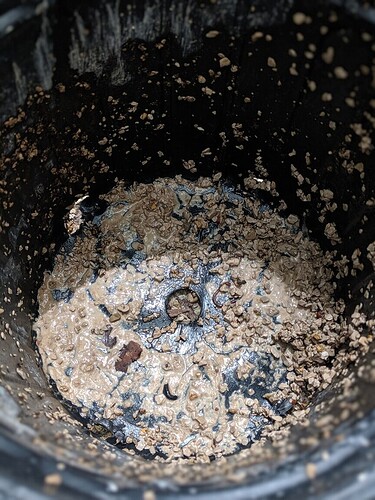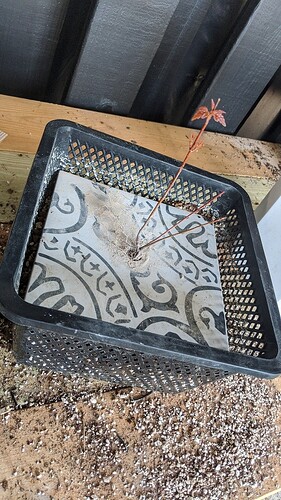I’m watching the soils stream again. Partially because I’m freaking out about the upcoming repotting season. I have so many to repot because I’m an idiot and went on a nursery stock rampage. 
This past season I’ve been working with DE and it’s been hit or miss. I figured I should share my experience and hopefully others will as well…and then I stumbled upon this thread lol.
I sourced my DE from the usual suspect. That being Napa auto parts stores. So far I’ve used DE in my grow bags at a 2:2:1 (bark “top soil”, DE, mushroom compost) mix, 1:1 pumice to DE mix in a pot, and 100% DE in a pond basket.
Grow bag results: Hard to say. Plants look like they’re doing well. The plants in question are 2 bald cypress, 1 southern live oak, 1 hinoki and 1 carolina sapphire cypress. Honestly, in the grow bags the bark “top soil” (cheap stuff from Lowe’s that’s mostly bark) probably handles the job of water retention and CEC. I used the DE in lieu of pumice because, frankly, I didn’t have any. I think that perlite would be a better substitute for pumice than DE in this mix.
Pumice/DE results: My wife found some maple saplings around our yard. I believe red maple? Idk. She wanted to grow them, so I gave her a mix of 50/50 pumice and DE substrate. Those little saplings have done well. The question is why.  Would they have done just as well in 100% pumice. I did not fertilize them, so the CEC component of the mix that is presumably provided by the DE should not be a factor. I’m going to attribute it to the larger grain size of the pumice thus a better balance of oxygen and water. And here’s why…
Would they have done just as well in 100% pumice. I did not fertilize them, so the CEC component of the mix that is presumably provided by the DE should not be a factor. I’m going to attribute it to the larger grain size of the pumice thus a better balance of oxygen and water. And here’s why…
100% DE results: Seeing the previously mentioned maple saplings do well inspired me to collect more from around the house with the hopes of making an eventual group planting. You know because, as Bill Valavanis mentioned, beginners want to jump straight to creating a forest composition lol. Anyway, I bought a couple pond baskets and filled them with DE. No pumice to be found, so I did what I had to do. DE by itself is very interesting. While it may appear wet on the surface when you water it the DE underneath could/will be bone dry. I think it has to do with the flat nature of the granules. Once they get wet the water just sheds off to the sides. It takes a lot of watering to really fully saturate the entire container. The same surface that’s fighting you also seems to dry out quickly when compared to the interior of the container. Especially with no top dressing. So now you’re left wondering whether or not you actually need to water. A quick dig into the substrate and you’ll see that it’s just the surface layer that appears dry. The saplings I’ve grown in the DE are alive and well, but are not thriving as well as the saplings in the 1P/1DE mix. They’ve grown half as much as the P/DE saplings. This is either due to under watering from not being able to fully saturate the substrate or overwatering due to thinking that the substrate was dry since the top layer goes pale white relatively quickly when compared to the interior.
All in all, I think that DE when mixed with other substates can be a viable alternative. Perhaps a larger grain of DE that’s more round in form factor would be better as well and allow for a more even distribution of water and oxygen. Sorry for rambling. I would love to hear what others have to say. I’m far from any sort of expert. These are just my observations at this point.
PS: Wash, wash, wash and wash again when working with DE. To say that it’s dusty is an understatement. The washing process is what first clued me in to the fact that getting water to penetrate it is difficult. That means washing in small batches. 
![]()





 Would they have done just as well in 100% pumice. I did not fertilize them, so the CEC component of the mix that is presumably provided by the DE should not be a factor. I’m going to attribute it to the larger grain size of the pumice thus a better balance of oxygen and water. And here’s why…
Would they have done just as well in 100% pumice. I did not fertilize them, so the CEC component of the mix that is presumably provided by the DE should not be a factor. I’m going to attribute it to the larger grain size of the pumice thus a better balance of oxygen and water. And here’s why…
